 There are a number of surveys that attempt to measure the spending intentions of people in the run up towards Christmas. For example a recent study carried out by YouGov found that people in the UK planned to spend an average of £599 on presents for their family and friends. This represented a 5.8% increase on the previous year. Planned total spending on Christmas was estimated to be a staggering £22 billion.
There are a number of surveys that attempt to measure the spending intentions of people in the run up towards Christmas. For example a recent study carried out by YouGov found that people in the UK planned to spend an average of £599 on presents for their family and friends. This represented a 5.8% increase on the previous year. Planned total spending on Christmas was estimated to be a staggering £22 billion.
 Respondents to another survey, carried out by the hotel chain Travelodge, stated that on average they planned to buy presents for 12 people. This study also found that the average expected spend on each present was £28.70 – an increase of £1.70 on the previous year. A rather obvious question for anyone interested in economics is whether this is either a sensible or an efficient way of allocating resources. One way to think about how an economist might approach this issue is to ask yourself the following questions after you have opened a present on Christmas day.
Respondents to another survey, carried out by the hotel chain Travelodge, stated that on average they planned to buy presents for 12 people. This study also found that the average expected spend on each present was £28.70 – an increase of £1.70 on the previous year. A rather obvious question for anyone interested in economics is whether this is either a sensible or an efficient way of allocating resources. One way to think about how an economist might approach this issue is to ask yourself the following questions after you have opened a present on Christmas day.
• How much money do you think the person who gave you the present paid for it?
• Ignoring the sentimental value, if you had not received this present how much would
you be willing to pay to purchase it?
Exactly 20 years ago the economist Joel Waldfogel posed questions very similar to these to a group of 86 students studying an intermediate microeconomics module at Yale University in the USA. On average the respondents to the questions estimated that friends and family had spent $438 on  the gifts they had received that Christmas. Unfortunately their willingness to pay for these same gifts was $313 on average. Economists would argue that this is an example of economic inefficiency because the recipients’ valuation of the gifts – as measured by their willingness to pay – was only 71.5% of the price paid by the person who gave them the presents. This means that it is possible to make the person who received the gift better off without making the person who purchased the gift any worse off. This argument can be illustrated with a simple example.
the gifts they had received that Christmas. Unfortunately their willingness to pay for these same gifts was $313 on average. Economists would argue that this is an example of economic inefficiency because the recipients’ valuation of the gifts – as measured by their willingness to pay – was only 71.5% of the price paid by the person who gave them the presents. This means that it is possible to make the person who received the gift better off without making the person who purchased the gift any worse off. This argument can be illustrated with a simple example.
Assume you have purchased a Liverpool football club shirt as a present for Sir Alex Ferguson and it cost you £50! Rather surprisingly Sir Alex likes the shirt but would have only been willing to pay £20 if he was buying it for himself. Imagine now that you have given him £50 cash instead of the shirt. This would not make you any worse off – your cash outlay would remain unchanged. However, Sir Alex would now be able to spend the £50 cash in a way which would give him far more satisfaction than the Liverpool football shirt would have given him. Sir Alex can therefore be made better off without making you worse off. The present in this example generates a deadweight welfare loss of £30. Waldfogel concluded from his later research based on a larger sample of people that, on average, people’s valuations of their presents is about 90% of the money actually spent on them. If this figure is accurate, it suggests that over £2 billion will be wasted in the UK this Christmas.
The size of the deadweight welfare loss depends on how well the person who is buying the present knows or understands the preferences of the recipient. The closeness of age, friendship or family relationship are all likely to influence the accuracy of this knowledge. Interestingly, Waldfogel found that presents from grandparents to grandchildren were the most inefficient: i.e. the difference between the recipient’s valuation of the gift and the price paid for the present was the greatest. The study also found that grandparents were more likely to give their grandchildren cash gifts.
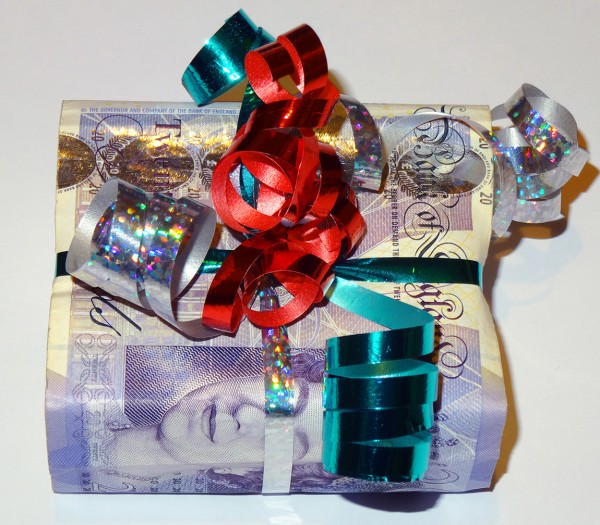 Do economists always advise people to give cash as presents? Thankfully the dismal science can find some positive things to say about giving gifts. The previous analysis can be criticised in a number of different ways. It assumes that the recipients are perfectly informed about all the potential gifts that are available. If the person buying the present can find an item that the recipient was unaware of, then it is possible that economic welfare might be increased. It has also been assumed that the pleasure or value people obtain from an item is not influenced by who has purchased it. It may be the case that people place a greater value on an item when it is a gift from somebody else. In the previous example, perhaps Sir Alex would value the Liverpool shirt at £60 if you had purchased it for him as a present. The analysis has also ignored the possibility that the person buying the present derives pleasure from trying to find a gift that they think the person would like. Perhaps people feel a ‘warm glow’ when they see the happiness of somebody opening their present on Christmas day.
Do economists always advise people to give cash as presents? Thankfully the dismal science can find some positive things to say about giving gifts. The previous analysis can be criticised in a number of different ways. It assumes that the recipients are perfectly informed about all the potential gifts that are available. If the person buying the present can find an item that the recipient was unaware of, then it is possible that economic welfare might be increased. It has also been assumed that the pleasure or value people obtain from an item is not influenced by who has purchased it. It may be the case that people place a greater value on an item when it is a gift from somebody else. In the previous example, perhaps Sir Alex would value the Liverpool shirt at £60 if you had purchased it for him as a present. The analysis has also ignored the possibility that the person buying the present derives pleasure from trying to find a gift that they think the person would like. Perhaps people feel a ‘warm glow’ when they see the happiness of somebody opening their present on Christmas day.
 A final interesting economic explanation for buying presents is that they might act as an effective signal in a situation where there is asymmetric information. It can be argued that this is the case in relationships where people have private information about their true feelings towards one another. One way of communicating these feelings is by simply telling someone how you feel about them. However, this might not be an effective signal, as someone who does not have such strong feelings could say the same things as someone who does! However, by taking the time and trouble to buy someone a present that they really like, you are able to signal more effectively how you really feel about them. The signal can be particularly strong if the person buying the present really dislikes shopping. Just giving someone cash, or not taking the time to buy a present the person really likes, might signal that you simply could not be bothered to exert the effort because your feelings are not that strong. The potential consequences of giving your partner money are amusingly demonstrated in the following clip: The Economics of Seinfeld: What’s the right Gift to give; cash?
A final interesting economic explanation for buying presents is that they might act as an effective signal in a situation where there is asymmetric information. It can be argued that this is the case in relationships where people have private information about their true feelings towards one another. One way of communicating these feelings is by simply telling someone how you feel about them. However, this might not be an effective signal, as someone who does not have such strong feelings could say the same things as someone who does! However, by taking the time and trouble to buy someone a present that they really like, you are able to signal more effectively how you really feel about them. The signal can be particularly strong if the person buying the present really dislikes shopping. Just giving someone cash, or not taking the time to buy a present the person really likes, might signal that you simply could not be bothered to exert the effort because your feelings are not that strong. The potential consequences of giving your partner money are amusingly demonstrated in the following clip: The Economics of Seinfeld: What’s the right Gift to give; cash?
Perhaps giving presents instead of cash is an economically efficient way of dealing with situations where asymmetric information is potentially an important issue.
Articles
British households plan to spend £820 on Christmas YouGov (11/11/13)
Brits ‘to spend more on Christmas presents this year with average gift costing £28.70’ Daily Mirror (13/11/13)
Christmas shoppers hit the sales in biggest spending spree since the recession began Daily Express (15/12/13)
Bah, Humbug The Joy of Economics: Making Sense out of Life, Robert J. Stonebraker (22/05/13)
What many economists don’t understand about Christmas Quartz, Tim Fernholz (19/12/13)
The Economics of Gifts Greg Mankiw’s Blog (24/12/06)
The case against Christmas presents The Guardian (19/12/13)
Grinchonomics or how the Economist stole Christmas Economics in Plain English (16/12/10)
The true value of the 12 days of Christmas reveals giving cash may be the most cost-effective gift Perth Now, Jessica Irvine (21/12/13)
Questions
- Explain what is meant by the term ‘allocative efficiency’. Use a diagram to help illustrate and explain your answer.
- Draw an indifference curve diagram to illustrate the potential welfare costs of giving presents instead of cash.
- Assess whether giving someone a gift card is more economically efficient than giving them a present.
- Using a simple numerical example, explain how economic welfare could be higher if someone buys a present that the recipient was unaware of. What factors might you have to take into account when carrying out this economic analysis?
- Explain what is meant by the term ‘asymmetric information’. Provide a number of examples to help illustrate your answer.
- What properties must a signal have if it is to successfully overcome problems caused by asymmetric information?
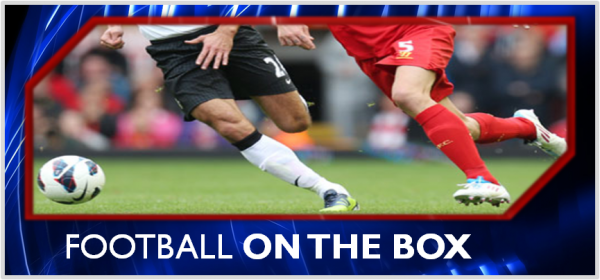 The enormous amounts of money broadcasters are willing to pay for the rights to show live football astonish most people. The figures have continued to rise despite the impact of a recession, slow economic growth and static or falling real incomes.
The enormous amounts of money broadcasters are willing to pay for the rights to show live football astonish most people. The figures have continued to rise despite the impact of a recession, slow economic growth and static or falling real incomes.
The deal to broadcast live games in the English Premier League (EPL) for the three seasons from 2007-10 was 65% higher than the agreement that ran from 2004-07. The recession did appear to slow growth down as the contract covering the seasons 2010-13 was only 5% higher than the previous one. However the total size of this deal was still a staggering £1.78billion or approximately £593 million per season. BSkyB was the most successful bidder in all of these auctions for live TV rights and successfully saw off competition from ITV Digital, ESPN and Setanta.
However in the last few years, BT Sport has entered the bidding process and has provided BSkyB with much stronger competition than its previous rivals. As a result, BskyB had to pay £2.3 billion in order to outbid BT Sport in the most recent auction.  The three-year deal beginning in the 2013-14 season gives BSkyB the rights to show 116 lives matches each year. BT Sport also paid £738 million for the rights to show 38 live matches a season. In total this means that the EPL earns approximately £1billion per season from the sale of broadcasting rights in the domestic market – an increase of 70%!
The three-year deal beginning in the 2013-14 season gives BSkyB the rights to show 116 lives matches each year. BT Sport also paid £738 million for the rights to show 38 live matches a season. In total this means that the EPL earns approximately £1billion per season from the sale of broadcasting rights in the domestic market – an increase of 70%!
The Champions and Europa League also auction the rights to broadcast live matches and there was a real shock when BT Sport recently announced that it had secured the exclusive rights to show all 350 live games in these competitions. Once again the figure it paid – just under £900 million for a three-year deal – took most people by surprise. It represented a 125% increase on the previous three-year deal with BSkyB and ITV. What was also surprising was that there was only one round in the sealed bid auction which suggests that BT Sport’s offer was well in excess of the one submitted by BSkyB.
Most of the initial reaction to this new deal has focused on its implications for the number of matches that will be available free to air: i.e. without having to pay for a subscription channel. The BT Sport contract does specify that the Champions League final and at least one match involving each British team will be shown free to air each season. However, this will be a significant reduction in the number of free to air games currently shown by ITV.
The new deal may also have implications for competitive balance in the EPL. This concept was discussed in a previous blog on this New Site Parachute payment problems for the English Football League and refers to how equally the most talented players are distributed amongst the teams in a league. This distribution will be heavily influenced by the degree to which the revenues of the teams in the league vary. Commenting on this latest contract Liverpool’s former managing director Christian Purslow stated that:
The fundamental effect of the BT deal will be additional wealth for England’s big teams. You will now have six teams (Manchester City, Chelsea and Manchester United, Arsenal, Liverpool and Spurs) playing for four Champions league places with the other 14 teams playing for survival. Never again will the likes of Everton, Newcastle or Villa get near the top – the difference in revenues will simply be too great.
To understand this statement one has to examine how the Champions League distributes the revenue it raises back to the teams that participate in the tournament. One part of the distribution mechanism is determined by the sporting performance of the teams in the competition.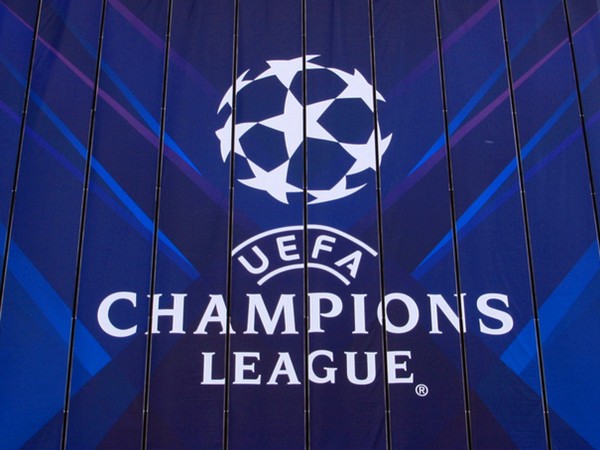 For example all 32 teams that make it to the group stages of the Champions League receive a minimum of €8.6 million. Each win in the group games earns a team an additional €1 million while a draw earns €500,000. The teams that make it to the last 16 receive an additional payment of €3.5 million, the quarter finalists earn an additional €3.9 million while the semi-finalists each receive €4.9 million. For example in the 2012-13 season, Manchester United received prize money of €16.1 million for reaching the last 16, whereas Bayern Munich received €35.9 million of prize money for winning the competition. If broadcasting revenues for the Champions League increase across the whole of Europe then the size of the prizes will almost certainly increase.
For example all 32 teams that make it to the group stages of the Champions League receive a minimum of €8.6 million. Each win in the group games earns a team an additional €1 million while a draw earns €500,000. The teams that make it to the last 16 receive an additional payment of €3.5 million, the quarter finalists earn an additional €3.9 million while the semi-finalists each receive €4.9 million. For example in the 2012-13 season, Manchester United received prize money of €16.1 million for reaching the last 16, whereas Bayern Munich received €35.9 million of prize money for winning the competition. If broadcasting revenues for the Champions League increase across the whole of Europe then the size of the prizes will almost certainly increase.
Teams also receive a share of the broadcasting revenue generated by the Champions League known as the market pool. The total size of the market pool allocated to the teams in any particular country depends on the value of the deal between the broadcasters in that country and UEFA. In the 2012-13 season the total market pool to be divided between the four English teams in the Champions League was €86.6 million. This was the second highest figure behind Italy. In contrast the four Portuguese teams had just over €7 million from the market pool to share between them because the value of the broadcasting deal in that country was so much lower. The market pool is split between the clubs based on (a) their finishing position in the domestic league the previous season and (b) how many games they played in the Champions League from the group stage onwards. FC BATE Borisov were the only representative from Belarus so did not have to share the market pool with any other team. Unfortunately for them the size of the market pool was only €290,000. Manchester United received a market pool payment of €19.45 million.
Given the dramatic increase in value of the broadcasting rights the size of the market pool for the English teams will rise significantly in 2015-16 season. The battle in the 2014-15 EPL season for the four Champions League places will be even stronger and more intense than ever. As a result, the competition for the services of the most talented players will probably push up their wages to ever higher levels.
Monopoly money: Football’s TV war makes the rich unreachable’ BBC Sport (17/11/13)
Champions League TV deal in focus BBC Business (11/11/13)
Champions League: BT Sport wins £897 football rights deal BBC Sport (9/11/13)
Top Soccer Leagues Get 25% Rise in TV Rights Sales, Report Says Bloomberg (11/11/13)
BSkyB could face Premier League premium The Guardian (11/11/13)
Clubs benefit from Champions League revenue UEFA (23/7/13)
Sky pleaded with football officials to reopen champions league talks The Telegraph (11/11/13).
Questions
- What is a sealed bid auction? How does it compare with different types of auctions?
- Suggest some reasons why BT Sport were willing to pay so much more than BSkyB for the broadcasting rights for the Champions League.
- Do you think that the potentially higher revenues for the top clubs might actually reduce attendances at their matches? Explain your answer.
- Explain how the potentially higher future revenues for teams participating in the Champions League in 2015-16 can be discounted in order to give them a present value.
- Draw a diagram to illustrate the impact of the new broadcasting deal on the marginal revenue product of the most talented players.
- Is the labour market for the most talented players competitive or is it an oligopsony? What implications does this have their wages? How does your answer change if the labour market is a bilateral monopoly?
 A remarkable event took place in Venezuela on Friday 8th November. Soldiers, on the orders of the president, temporarily occupied a chain of shops run by a leading electrical retailer called Dakar. The shops were forced to cut the prices of their electrical appliances and five managers were arrested and accused of ‘hiking up’ prices.
A remarkable event took place in Venezuela on Friday 8th November. Soldiers, on the orders of the president, temporarily occupied a chain of shops run by a leading electrical retailer called Dakar. The shops were forced to cut the prices of their electrical appliances and five managers were arrested and accused of ‘hiking up’ prices.
Unsurprisingly, news of these lower prices spread very quickly and long queues rapidly appeared outside the stores as people hoped to buy plasma televisions, fridges and washing machines at bargain prices. On Sunday 9th November, the president, Nicolas Maduro, gave a televised address in which he condemned the owners of the stores and announced that he was going to ask the National Assembly to grant him extra powers so that he could extend price controls to all consumer goods. He stated that he would next turn his attention to stores selling toys, cars, textiles and shoes.
The use of price controls in Venezuela is not new and dates back to 2003 when they were first introduced by the then president Hugo Chavez. Initially the regulations were imposed on various foods and basic goods. For example, by 2009 maximum prices had been set for cooking oil, white rice, sugar, coffee, flour, margarine, pasta and cheese. Businesses often complained that the maximum prices set by the government were below the costs of production. For example after a maximum price of 2.15 Bolivares was placed on a kilo of rice, producers argued that the cost of producing a kilo of rice was 4.41 Bolivares.
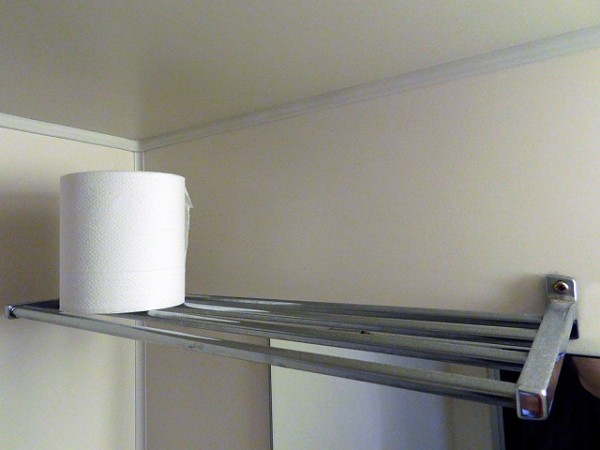 The impact of the maximum prices in Venezuela appears to have been exactly what the theories in the economics textbooks would have predicted – shortages, long queues of people waiting outside shops and a flourishing black market. An article on the shortage of toilet rolls has been discussed in a previous article on this news site: Shortages in Venezuela- what’s the solution? However this has not stopped the Venezuelan government extending the scheme and increasing the number of products that have maximum prices imposed on them. In 2011 Hugo Chavez argued that the policy was required because:
The impact of the maximum prices in Venezuela appears to have been exactly what the theories in the economics textbooks would have predicted – shortages, long queues of people waiting outside shops and a flourishing black market. An article on the shortage of toilet rolls has been discussed in a previous article on this news site: Shortages in Venezuela- what’s the solution? However this has not stopped the Venezuelan government extending the scheme and increasing the number of products that have maximum prices imposed on them. In 2011 Hugo Chavez argued that the policy was required because:
The market has…become a perverse mechanism where big monopolies, the big trans-nationals and the bourgeoise dominate and ransack the people.
Economics textbooks often include some analysis of the impact of price ceilings on a competitive market. The effects on consumer surplus, producer surplus and deadweight welfare are usually discussed. However the potential administrative costs are rarely considered. The Venezuelan case helps to illustrate how in practise these costs could be quite significant.
For example, in April 2012 price controls in Venezuela were extended to a range of 19 products including fruit juice, toilet paper, nappies, soap, detergent, deodorant, toothpaste, baby food, floor polish, mineral water and razor blades. This caused a reduction in prices of between 4% and 25%. However this did not simply mean setting 19 different maximum prices because the goods were all sold in different quantities or different package sizes. For example a tube of toothpaste could be purchased in 4 different sizes – 50ml, 75ml, 100ml and 150 ml. Therefore officials had to set 4 different figures. Nappies were sold in 12 different package sizes ranging from10 nappies/packet to78 nappies/packet. Once again this meant that the administrators had to set 10 different maximum prices just for nappies. In total across the 19 products government officials had to set prices for 616 different individual items!! Companies were given just one month to adjust to the new legislation.
Whenever maximum prices are imposed on a competitive market both frustrated buyers and sellers have an incentive to evade them and trade illegally. Therefore the government established a number of organisations in an attempt to make sure the prices were enforced. One agency is called The National Superintendency of Fair Costs and Prices or Sundecop. Officials from this agency were sent out to 82 retail outlets in April 2012 to try to make sure that firms were sticking to the new regulated prices. They also printed and handed out leaflets to the public informing them of the changes. Another agency is called ‘The Institute for the Defense of People’s Access to Goods and Services’ or ‘Indepabis’. This organisation launched a new strategy in June 2012 in order to monitor compliance. This included the creation of a network called the Friends of Indepabis which would act as an information point for members of the public to report illegal pricing. A new complaints phone line was also introduced.
If president Maduro is granted the power to extend maximum prices to all consumer products, then one can only begin to imagine the extra administrative costs involved with implementing the policy.
Venezuelan president Maduro ‘to expand price controls’ BBC News (11/11/13)
Venezuela sends in troops to force electronics chain to charge ‘fair’ prices NBC News (13/11/13)
Venezuela appliances crackdown spurs uncertainty ABC news (13/11/13)
Venezuela’s government seizes electronic goods shops BBC News (9/11/13)
Venezuelan government sends TROOPS into electronics chain to force them to sell goods at a “fair price” DailyMirror (10/11/13)
Shocher: Price Controls Lead to Shortages in Venezuela Free Advice, Robert Murphy (2/10/13)
Venezuelan Government Action against Overpricing Welcomed by Citizens, Manipulated by Media venezuelanalysis (12/11/13).
Questions
- Explain why a maximum price imposed on a competitive market might generate a shortage. Draw a diagram to illustrate and explain your answer.
- Are there any circumstances when a maximum price would not cause a shortage in a competitive market?
- Analyse the impact of a maximum price on consumer surplus, producer surplus and deadweight welfare loss. Assume the market is competitive and clearly state any other assumptions you have made in your analysis. Comment on the impact of the price ceiling on economic efficiency.
- Illustrate and explain what would happen to consumer surplus and deadweight welfare loss if the available goods for sale were only purchased by the consumers with the lowest willingness to pay.
- Why might a maximum price lead to a flourishing black market?
- The former president, Hugo Chavez, argued that the price regulations were required because “big monopolies… ransack the people”. Using economic theory discuss this statement. Examine the impact of a maximum price on a pure monopoly.
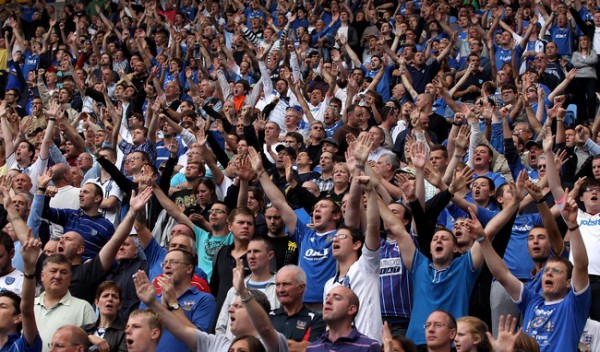 The BBC has recently published the results of its third report on average ticket prices for football for the top ten divisions in the UK. These include all four professional leagues in England (The Premier League, The Championship, League 1 and League 2), the top division in English non-league football (Conference Premier), the 4 professional leagues in Scotland (The Scottish Premier, The Scottish Championship, Scottish League One, Scottish League Two) and the top league in women’s football (Women’s Super League). Most of the headlines have focused on evidence of falling ticket prices in the 4 professional leagues in England.
The BBC has recently published the results of its third report on average ticket prices for football for the top ten divisions in the UK. These include all four professional leagues in England (The Premier League, The Championship, League 1 and League 2), the top division in English non-league football (Conference Premier), the 4 professional leagues in Scotland (The Scottish Premier, The Scottish Championship, Scottish League One, Scottish League Two) and the top league in women’s football (Women’s Super League). Most of the headlines have focused on evidence of falling ticket prices in the 4 professional leagues in England.
The BBC study focuses on four different categories of ticket.
– The most expensive adult season tickets
– The cheapest adult season tickets
– The most expensive adult match-day tickets
– The cheapest adult match-day tickets
The average price in each category is simply calculated as the price charged by each club in that category divided by the number of clubs. For example, the most expensive season ticket offered by Arsenal last year was £1955, whereas at Swansea it was £499. The average price was lower in all four categories for the three leagues in the English Football League (The Championship, League 1, League 2). For example, the price of the cheapest adult season tickets fell by 8.4% in the Championship, 1.6% in League 1 and 7.6% in League 2. Prices were also lower in three out of the four categories in the English Premier League (EPL). The only exception was the price of the cheapest adult season tickets which actually increased by 4.3%.
The overall trend in falling prices is in marked contrast to the previous year’s report that had found evidence of rising prices. For example the 2012 survey found that the average price of the cheapest adult match-day ticket increased by 11% on average across the EPL and EFL.
One factor that may be driving the apparent fall in prices in the English Football League is the falling attendances at games. Average attendance in 2012-13 was down 5% on the previous year – the second consecutive fall. It was 9% lower than in 2009-10 season. In complete contrast, attendance at EPL games were slightly up on the previous year and there were also record season ticket sales.
The increase in the average price of the cheapest adult season tickets in the EPL has received criticism from supporters groups. For example, The Football Supporters’ Federation called for far larger cuts in ticket prices, which they argued could have been funded by the big increase in the revenue from the latest TV deal. BskyB and BT paid a combined total of £3.018bn for the rights to show live games from the 2013-14 season to the 2015-16 season. This was an increase of £1.773bn on the previous deal. Malcolm Clarke, chair of the Football Supporters’ Federation, said
The Premier League has had an eye-watering increase in its media income. For example, they could knock £50 off the price of every single ticket of every single game for every single spectator in the Premier League this season and still have the same amount of money as they previously had.
Some have argued that it may also be in the commercial interests of the clubs to reduce prices. Professor Simon Chadwick from Coventry University commented that:
Lower prices and more fans can mean an increase in overall revenue, and there is also the secondary spend to consider: club merchandise, food and drink and so on.
However, care must be taken when interpreting this data because the report does not state how many fans actually pay the most expensive or cheapest price in each of the four categories. For example, the report found that Arsenal charged the highest price of £126 in the most expensive match-day ticket category. The club responded to this finding by stating that less than 100 people would actually pay this price at any given game!
Burton Albion was also reported as having the highest match-day ticket price of £30 for both League 1 and League 2. Once again the club responded by stating that only one or two of these tickets would be sold and car-parking, food and a programme were included in the price. Perhaps it would be more accurate to title the report “The average ticket price of the most expensive and cheapest seats for a football match”.
Some weighting system, such as that used to calculate the retail price index, would need to be used in order to obtain a more accurate picture of what is happening to average prices. It is possible that the price of tickets covered in the BBC report could be falling whilst the average price of all tickets could still be rising.
Articles
BBC Price of Football 2013: Average ticket prices fall BBC News (12/9/13)
Price of Football: The Premier League – then everybody else BBC News Matt Slater (12/9/13)
Price of Football: The Premier see some rises in cost BBC News Andy Cryer (12/9/13)
Price of Football: The Premier see some rises in cost BBC News (13/5/12)
Average ticket prices fall reveals Price of Football survey but Premier League continues to live in a world of its own The Independent (12/9/13)
Ben Robinson questions accuracy of BBC “Price of Football” survey BurtonMail David Broome (12/9/13)
Survey finds average prices of football match tickets have fallen The Independent (12/9/13)
Arsenal top BBC’s Price of Football table The Football Supporters Federation (12/9/13)
Questions
- Consider a number of factors that might determine the price of tickets for a particular football match.
- Draw a demand and supply diagram to illustrate what has happened in the market for tickets for matches in both the EPL and the EFL over the last couple of years.
- What non-price factors might have lead to the fall in demand for tickets for games in the English Football League?
- What does the evidence suggest about the income elasticity of demand for tickets at English Premier League games?
- In the article Professor Chadwick is quoted as saying that “Lower prices and more fans can mean an increase in overall revenue”. Using the concept of price elasticity of demand explain how this could be the case.
- Using a simple numerical example explain why the average price of tickets may be rising even though the price of tickets in the 4 categories in the BBC study are falling.
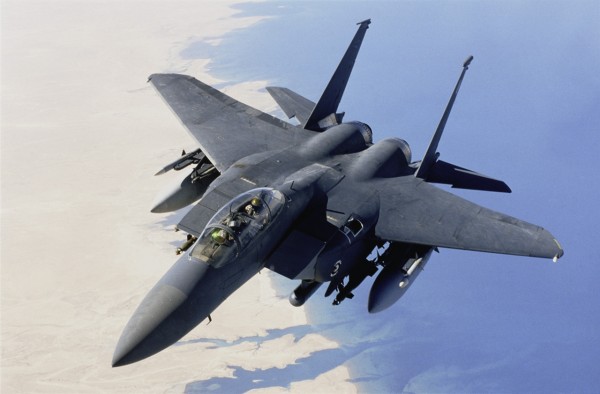 Every summer a number of air shows take place in the UK, such as those at Farnborough, Cosford and the Royal International Air Tattoo. Some of these events prove to be extremely popular and successful. For example, over 50,000 people attended the event at Cosford on Sunday 9th June to watch a five-and-a-half-hour flying display, including the Red Arrows, a Vulcan bomber and a RAF Battle of Britain Memorial Flight, which featured Spitfire, Hurricane and Lancaster aircrafts.
Every summer a number of air shows take place in the UK, such as those at Farnborough, Cosford and the Royal International Air Tattoo. Some of these events prove to be extremely popular and successful. For example, over 50,000 people attended the event at Cosford on Sunday 9th June to watch a five-and-a-half-hour flying display, including the Red Arrows, a Vulcan bomber and a RAF Battle of Britain Memorial Flight, which featured Spitfire, Hurricane and Lancaster aircrafts.
The event was so popular that some people who had paid £25 for a ticket failed to make it to the show ground because they were stuck in a 9 mile traffic jam! The popularity of these events does raise an interesting economic question. Why do so many people pay to attend when it is possible to watch much of the air show from outside the showground? If people can enjoy the benefits of watching an event whether or not they have paid then we might expect the majority of them not to pay.
Air shows seem to have some of the characteristics of a public good: i.e. to some extent the consumption benefits are both non-rival and non-excludable. By non-rival it is meant that one person’s use or consumption of the good does not decrease the quantity available for somebody else to use or consume. If one person watches the Red Arrows fly by, it does not decrease the ability of others to watch them. Contrast this with a product that has the characteristic of being ‘rival’ such as a hamburger. If someone eats a hamburger, it reduces the amount that is available for others to enjoy. The good is ‘used up’ during consumption. Other people cannot eat the same hamburger!!! Many sporting and music events share this characteristic of non-rivalry. For example if somebody is watching a band playing live at Glastonbury it does not stop somebody else from enjoying the benefits of watching the band. The performance of the band is not ‘used up’ like the hamburger when a person watches the show.
The major difference between Glastonbury and an air show is that the event organisers at Glastonbury can prevent people who have not paid for a ticket from enjoying the show. The event is excludable, as fans have to enter the show arena in order to see the bands. However, as one contributor to an internet discussion site commented:
Air show organisers are at a particular disadvantage compared to other show organisers because the key elements of their show can be seen for miles.
Another contributor added that:
Unfortunately being an air show by its very nature it’s very public – the planes are in the air for everyone to see for free for miles around.
In other words, air shows have the characteristic of being non-excludable, as people can benefit regardless of whether they have paid or not.
These public good properties seem to be causing problems for an air show in Welshpool that appears to have an issue with a number of non-payers watching the event. The organisers recently stated that:
We can’t stop people watching from the hillsides, but perhaps we can make them understand that they need to come to the show and pay.
The previous year the organisers had sent people out with buckets to collect voluntary donations from those sitting on the hillside. However they found that:
People were not for giving much at all and it was noticeable how much copper was in the buckets we’d used and there were hardly any notes.
One solution being proposed in order to generate more revenue is to increase the entry fee, which is currently £5, in order to compensate for those who are not paying.
Articles
Bob Jones Memorial Air Show urges people to buy tick BBC News (9/6/13)
How to make an airshow pay PistonHeads, (9/6/13)
Free or should you pay Talk Photography, (9/6/13)
An organisers view Airshow, (9/6/13)
Cosford Air Show pledge over traffic chaos Shropshire Star, (10/6/13)
RAF Cosford Air Show – Home RAF Cosford Air Show, (12/6/13).
Questions
- What practical problems does a show such as Glastonbury face in trying to make the event excludable?
- In the blog it explains how one person watching a band live does not have a negative impact on the pleasure other people will derive from watching the same band: i.e. it is non-rival. Is this always true? Can you think of any circumstances when watching a live band might become a rival good?
- What term do economists use for goods that are non-rival but are excludable? Think of at least three examples.
- What ideas might the organisers of an air show adopt to encourage people to pay and enter the show ground area?
- Can you think of any strategies that might be used to increase the number and size of the voluntary donations made by those who watch the airshow for free from a hill-side?
- What are the organisers assuming about the price elasticity of demand for the air show at its current price if they claim that increasing prices will lead to an increase in revenue?
 There are a number of surveys that attempt to measure the spending intentions of people in the run up towards Christmas. For example a recent study carried out by YouGov found that people in the UK planned to spend an average of £599 on presents for their family and friends. This represented a 5.8% increase on the previous year. Planned total spending on Christmas was estimated to be a staggering £22 billion.
There are a number of surveys that attempt to measure the spending intentions of people in the run up towards Christmas. For example a recent study carried out by YouGov found that people in the UK planned to spend an average of £599 on presents for their family and friends. This represented a 5.8% increase on the previous year. Planned total spending on Christmas was estimated to be a staggering £22 billion. Respondents to another survey, carried out by the hotel chain Travelodge, stated that on average they planned to buy presents for 12 people. This study also found that the average expected spend on each present was £28.70 – an increase of £1.70 on the previous year. A rather obvious question for anyone interested in economics is whether this is either a sensible or an efficient way of allocating resources. One way to think about how an economist might approach this issue is to ask yourself the following questions after you have opened a present on Christmas day.
Respondents to another survey, carried out by the hotel chain Travelodge, stated that on average they planned to buy presents for 12 people. This study also found that the average expected spend on each present was £28.70 – an increase of £1.70 on the previous year. A rather obvious question for anyone interested in economics is whether this is either a sensible or an efficient way of allocating resources. One way to think about how an economist might approach this issue is to ask yourself the following questions after you have opened a present on Christmas day. the gifts they had received that Christmas. Unfortunately their willingness to pay for these same gifts was $313 on average. Economists would argue that this is an example of economic inefficiency because the recipients’ valuation of the gifts – as measured by their willingness to pay – was only 71.5% of the price paid by the person who gave them the presents. This means that it is possible to make the person who received the gift better off without making the person who purchased the gift any worse off. This argument can be illustrated with a simple example.
the gifts they had received that Christmas. Unfortunately their willingness to pay for these same gifts was $313 on average. Economists would argue that this is an example of economic inefficiency because the recipients’ valuation of the gifts – as measured by their willingness to pay – was only 71.5% of the price paid by the person who gave them the presents. This means that it is possible to make the person who received the gift better off without making the person who purchased the gift any worse off. This argument can be illustrated with a simple example. Do economists always advise people to give cash as presents? Thankfully the dismal science can find some positive things to say about giving gifts. The previous analysis can be criticised in a number of different ways. It assumes that the recipients are perfectly informed about all the potential gifts that are available. If the person buying the present can find an item that the recipient was unaware of, then it is possible that economic welfare might be increased. It has also been assumed that the pleasure or value people obtain from an item is not influenced by who has purchased it. It may be the case that people place a greater value on an item when it is a gift from somebody else. In the previous example, perhaps Sir Alex would value the Liverpool shirt at £60 if you had purchased it for him as a present. The analysis has also ignored the possibility that the person buying the present derives pleasure from trying to find a gift that they think the person would like. Perhaps people feel a ‘warm glow’ when they see the happiness of somebody opening their present on Christmas day.
Do economists always advise people to give cash as presents? Thankfully the dismal science can find some positive things to say about giving gifts. The previous analysis can be criticised in a number of different ways. It assumes that the recipients are perfectly informed about all the potential gifts that are available. If the person buying the present can find an item that the recipient was unaware of, then it is possible that economic welfare might be increased. It has also been assumed that the pleasure or value people obtain from an item is not influenced by who has purchased it. It may be the case that people place a greater value on an item when it is a gift from somebody else. In the previous example, perhaps Sir Alex would value the Liverpool shirt at £60 if you had purchased it for him as a present. The analysis has also ignored the possibility that the person buying the present derives pleasure from trying to find a gift that they think the person would like. Perhaps people feel a ‘warm glow’ when they see the happiness of somebody opening their present on Christmas day.  A final interesting economic explanation for buying presents is that they might act as an effective signal in a situation where there is asymmetric information. It can be argued that this is the case in relationships where people have private information about their true feelings towards one another. One way of communicating these feelings is by simply telling someone how you feel about them. However, this might not be an effective signal, as someone who does not have such strong feelings could say the same things as someone who does! However, by taking the time and trouble to buy someone a present that they really like, you are able to signal more effectively how you really feel about them. The signal can be particularly strong if the person buying the present really dislikes shopping. Just giving someone cash, or not taking the time to buy a present the person really likes, might signal that you simply could not be bothered to exert the effort because your feelings are not that strong. The potential consequences of giving your partner money are amusingly demonstrated in the following clip: The Economics of Seinfeld: What’s the right Gift to give; cash?
A final interesting economic explanation for buying presents is that they might act as an effective signal in a situation where there is asymmetric information. It can be argued that this is the case in relationships where people have private information about their true feelings towards one another. One way of communicating these feelings is by simply telling someone how you feel about them. However, this might not be an effective signal, as someone who does not have such strong feelings could say the same things as someone who does! However, by taking the time and trouble to buy someone a present that they really like, you are able to signal more effectively how you really feel about them. The signal can be particularly strong if the person buying the present really dislikes shopping. Just giving someone cash, or not taking the time to buy a present the person really likes, might signal that you simply could not be bothered to exert the effort because your feelings are not that strong. The potential consequences of giving your partner money are amusingly demonstrated in the following clip: The Economics of Seinfeld: What’s the right Gift to give; cash? 





